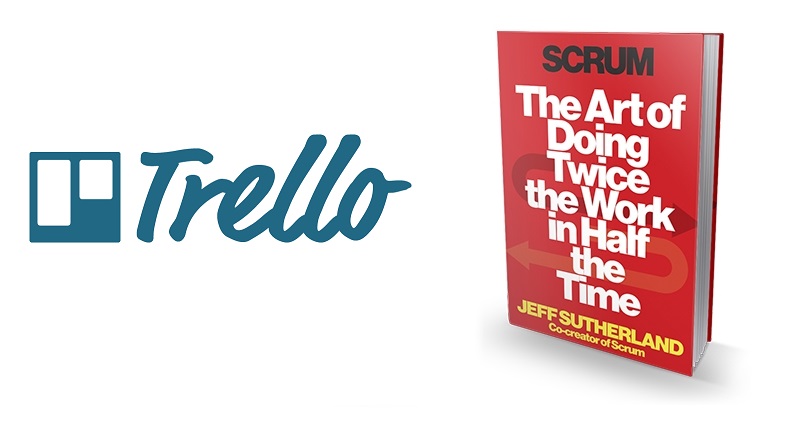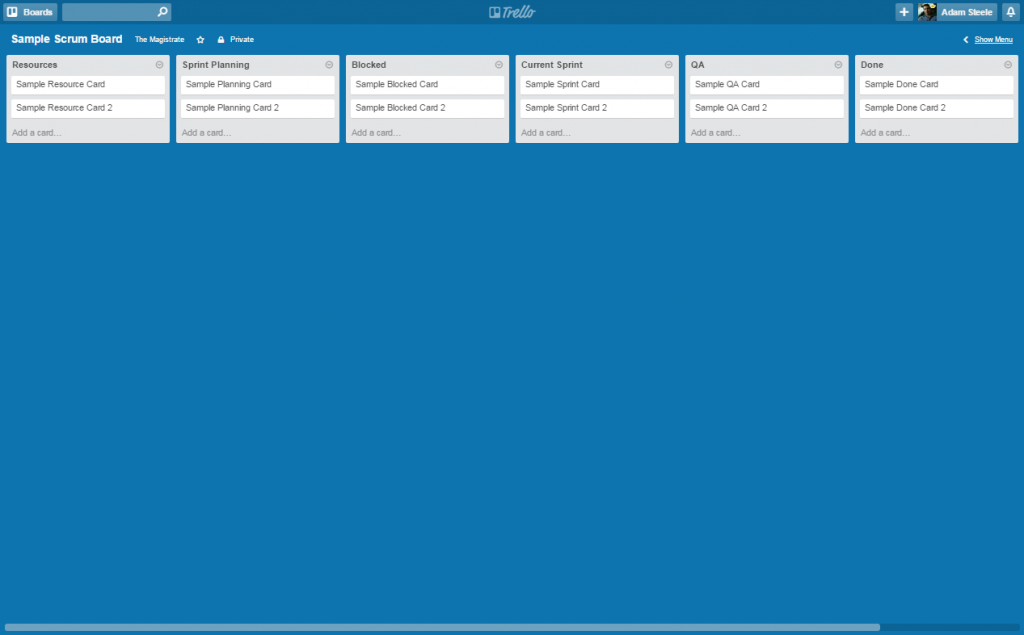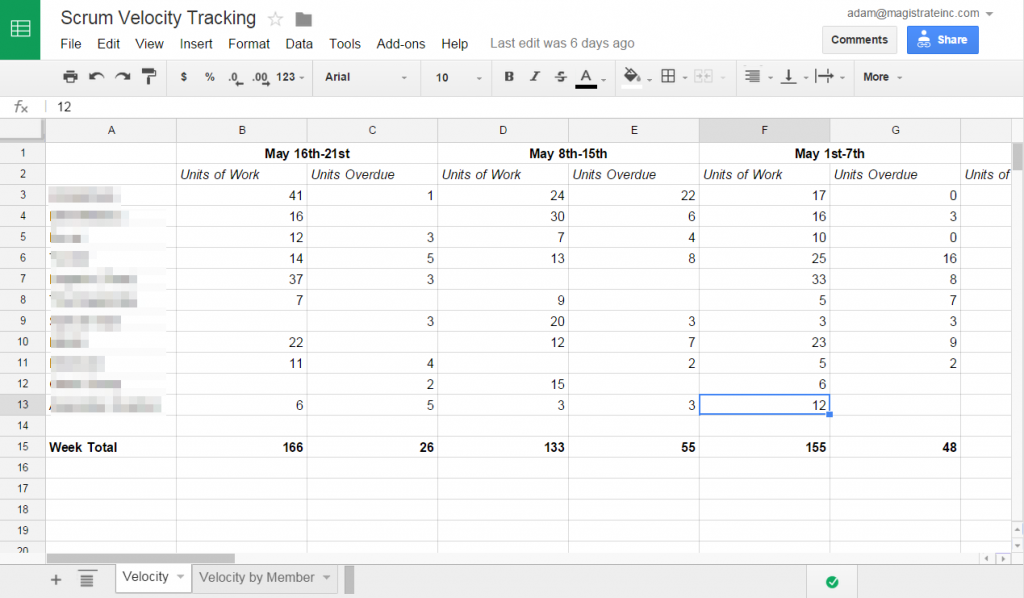Our Agency’s Epic 200% Productivity Secret: [Trello & Scrum]

Hand off the toughest tasks in SEO, PPC, and content without compromising quality
Explore ServicesJust over a year ago, we were losing clients faster than we could acquire them. We were barely delivering, and when we did, it was rarely on time. Had we continued down that path, we would have had to close our doors, no doubt about it.
I’m going to tell you what our problem was, and how we went about fixing it, effectively saving our business of 5 years from certain death. I’m going to show you how you can implement what we did, and make your business/team produce exponentially faster.
The Backstory
We thought we were on the cusp of agency, and workflow/collaboration technology. We were using Trello, and we’d (well more like me) praise Trello and all it had done for us any time given the chance. I still do, as it is an incredible product. I recall making videos for potential clients during the courting process, showing them a screencast of Trello and how we moved and collaborated with our existing clients. They were wow’d, and we closed just about every deal that came across our desk. I was super proud of these videos, and showing off our process.
But that was all show. It was pretty, it looked like it worked, and we even fooled ourselves into thinking it was working. It wasn’t. It took us losing 4 multi-million (billion in one case) clients to realize how totally f*cked we were. And even after that in fact, we continued on for months without a viable solution.
We tried to work faster, come up with more creative solutions, and the result was us working harder, and putting in more hours – that’s it. Clients were no happier, and we were producing no better solutions, at no greater pace.
The Catalyst
I started reading again. I listen to Gary Vaynerchuk’s Podcasts a fair bit, and he humblebrags that he hasn’t read a book, like ever. That all his business savvy comes from the gut, and I suppose I can understand that. Businesses were built before business related books lined the shelves at Chapters, or were readily available on Amazon or Audible. I too managed to build a couple profitable businesses without so much as cracking a book, or obtaining a high school diploma.
HOWEVER, now that my nose is back in a book, I feel like a real dummy for being so ignorant. I’ve read more books in 5 months than I’ve read in my entire life – three times as many I think. Now, by books I mean audiobooks on Audible. Best App EVER. I can’t manage for the life of me to actually read a book. Sitting still that long would drive me nuts.
Of the 20+ books I’ve listened to since, one stands out more than the rest, and totally transformed everything: Scrum: The Art of Doing Twice the Work in Half the Time. Scrum saved our business. But not just Scrum, how we incorporated it into our marketing agency.
How We Did It
First, we need to understand what Trello and Scrum are. Trello can be explained pretty easily by watching this video. Scrum however is tough to summarize. Scrum is often defined as a flexible, holistic product-development strategy based around a team that works as a unit to reach a common goal. It enables teams to move more quickly, with more agility, to be more productive and all round, feel more accomplished at the end of the day/week/whatever. It’s helpful to know Scrum definitions going forward, so have a look here.
Now, we weren’t about to drop Trello. That wasn’t the solution. I knew it had everything we needed, we just needed to use it differently. We needed a framework, and some rules. The framework came together on a Trello board like this:

There are six, and sometimes 7 columns (or lists as Trello calls them). If some words below seem like martian, you can find definitions here.
- Resources: Assets that will be used in the execution of client deliverables/tasks. As well, we will store our recurring items in the resources list. Recurring items may be assigned a due date.
- Sprint Planning: This is the column where we all begin planning for the next sprint* without interfering with current sprint activities. More detail can be gathered and applied and projects can be broken down into their final, pre-sprint format. Sprint planning items will be sorted in two ways: 1) From top to bottom, highest priority to lowest. 2) By color. Green = Approved, which means planned and ready for an upcoming sprint. I will explain Trello labels soon.
- Current Sprint: The Current Sprint is the work that needs to be done right now, or by the end of the sprint, which for us runs 7 days from start to finish, Friday to Thursday.
- Blocked: Some force (external usually) has made it impossible to continue with this task. We will move it into blocked, until the blockade has been lifted, or the next sprint.
- QA: Quality assurance (sometimes called QC or Quality Check). Once the task has been completed, the card will be dragged from current sprint to QA. It will be reviewed, and dragged to done when confirmed indeed done.
- Done: Done means delivered and working (bug free, ideally). If it were a car, it would be ready for driving. Be strict about this.
We had to lay some ground rules…
- All work done for a client should be reflected on their Trello board. If you are going to share your board with your clients like us, clients like to see stuff being done, moved, etc. Transparency is great, but you are now being held more accountable.
- One board per client.
- If the end of our sprint is Thursday night, DO NOT come to the project manager/scrum master the day of with questions. Get your questions answers days before.
- No backchannel Trello boards. Internal communication should be done solely via: Slack/Google Hangouts and turned into “client friendly” cards/tasks/comments
- aka. No whining on the boards, that’s only for private chats.
- all work needs to be shown on Trello, from that little design tweak to a set of H1/meta edits
Yes you read it right, we are among those many using Slack. Holy crap it is amazing. Company culture is a tough thing to build in a non remote company, but where much of your team is scattered across the world, it’s even harder. Slack helped bring about an amazing culture, and got us talking for the first time. Hat tip to Michael Yurechko, our COO, for bringing that in. How we use it is another thing entirely, and the subject of a different post.
A few more for good measure…
With regards to tasks (Trello calls them cards):
- A card is a project and/or group of tasks that should take no longer than 1 day to complete.
- If a project will take more than 1 day, it should be broken up into multiple cards under Sprint Planning and put in order.
- Cards move left to right, unless “blocked”/waiting on something, at which point it would be dragged into blocked.
- Every project & task we do should have a card. No work should be done ‘behind the scenes.’
- Only project managers (scrum masters*) should be creating cards, unless otherwise instructed.
- We use three Trello labels: green, orange and purple. Green means the task/card has been fleshed out, and is ready to be dragged into the next sprint. Orange when the task has taken longer than a sprint (1 week in our case) and is now overdue. Purple when it is a recurring task (reporting, citation building), of which sit in the resources list/column.
One big challenge for us was that things weren’t moving. Or at least it wasn’t obvious. Trello cards have checklists, comment sections, description sections, the ability to add Google Docs, etc. So much could be happening inside a card, and you wouldn’t know it. This was a problem for our team, and the client. Our team because we’d forget what was going on inside, and it was depressing as heck to never see a card move to done. Clients because at a glance, it looked like we weren’t doing a darn thing.
How to Speed Up
Well, first you need to know how fast you are going – your velocity. Our sprints are 1 week long, so at the end of the week, we figure out how fast we moved (or how much we got done) and compare that against previous weeks. Before I explain it further, here is my table in Google Spreadsheets where I add things up each week

What are these units about? Each card is assigned a unit of measurement. This is added at the end of the title of a Trello card. Looking like…

Units indicate project size. Size numbers include 1, 2, 3, 5 and 8. These are not to be associated with hours. Instead, think of these numbers like…2 is twice as big as 1, OR 5 is more than twice the size of 2. The numbers will explain the size of the project. We stop at 8 because an 8 is the biggest. A project/task/card can only be as big as something that would take an entire day. And so a 8 would symbolic of a project the size of a full days work.
At the end of each week, the scrum master/project manager will add up all the numbers in QA, and will be able to determine how fast we worked and/or how much we were able to accomplish in a single sprint. They will ALSO add up the numbers attached to overdue cards (labeled orange), indicating what we failed to accomplish.
With the ability to measure, it is now the job of the project manager/scrum master to figure out what is getting in people’s way. What hurdles are they encountering that may be slowing down their velocity. And then to attack those hurdles so they do not again appear. This involves speaking to those performing the tasks regularly, and asking them what’s in there way. Remove enough, and you will see your team travel faster each week.
Honestly, that’s about it. That’s how we work. It’s far from perfect, and we are still coming up with better ways to make this system work for us, but I promise you, once you go Scrum, you never go back. Read the book. I’ve read it 5 times. Pick up Trello. Reap the results.
Want a ready-to-go manual for implementing Scrum + Trello on your team? Aiming to collaborate with clients and want our client briefing/how-to? Email us at adam@magistrateinc.com and we will fire it over to you. Want more awesomeness like this? Join our mailing list (scroll to the bottom). We’ve got a ton more coming.
UPDATE: I have created a helpful video to show you in further detail how your team can move faster.
UPDATE 2: How cool!? Trello has added a sample board of ours to their inspiration page.
Hand off the toughest tasks in SEO, PPC, and content without compromising quality
Explore Services




